Konstantinos Ntougias
Soft Robotics-Inspired Flexible Antenna Arrays
Jul 09, 2025Abstract:In this work, a novel soft continuum robot-inspired antenna array is proposed, featuring tentacle-like structures with multiple antenna elements. The proposed array achieves reconfigurability through continuous deformation of its geometry, in contrast to reconfigurable antennas which incur a per-element control. More specifically, the deformation is modeled by amplitude and spatial frequency parameters. We consider a multi-user multiple-input single-output downlink system, whereby the optimal deformation parameters are found to maximize the sum rate in the network. A successive convex approximation method is adopted to solve the problem. Numerical results show that the proposed deformable array significantly outperforms fixed geometry and per-element reconfigurable arrays in sum rate, demonstrating the benefits of structure-level flexibility for next-generation antenna arrays.
Wireless Information and Energy Transfer in the Era of 6G Communications
Apr 29, 2024
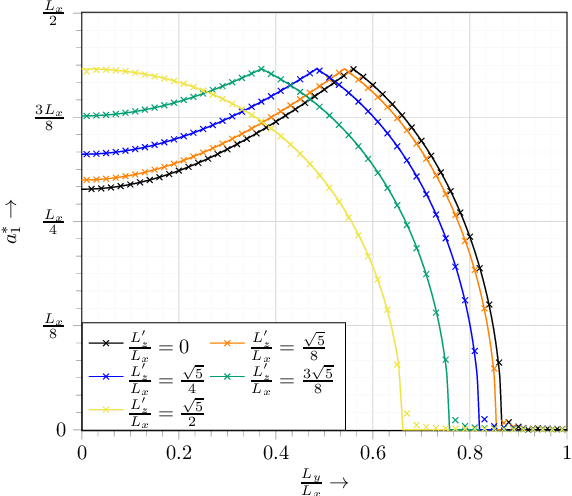
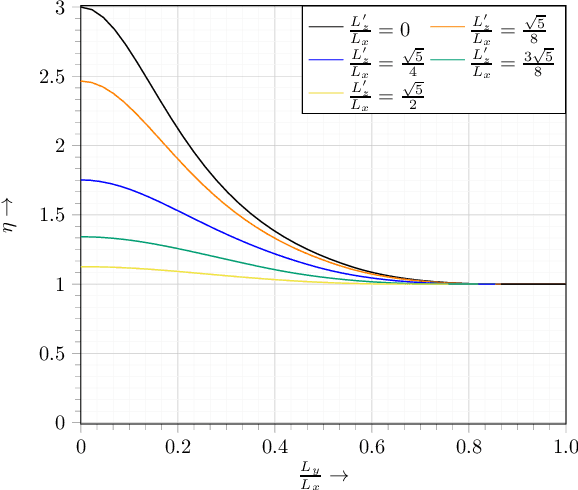

Abstract:Wireless information and energy transfer (WIET) represents an emerging paradigm which employs controllable transmission of radio-frequency signals for the dual purpose of data communication and wireless charging. As such, WIET is widely regarded as an enabler of envisioned 6G use cases that rely on energy-sustainable Internet-of-Things (IoT) networks, such as smart cities and smart grids. Meeting the quality-of-service demands of WIET, in terms of both data transfer and power delivery, requires effective co-design of the information and energy signals. In this article, we present the main principles and design aspects of WIET, focusing on its integration in 6G networks. First, we discuss how conventional communication notions such as resource allocation and waveform design need to be revisited in the context of WIET. Next, we consider various candidate 6G technologies that can boost WIET efficiency, namely, holographic multiple-input multiple-output, near-field beamforming, terahertz communication, intelligent reflecting surfaces (IRSs), and reconfigurable (fluid) antenna arrays. We introduce respective WIET design methods, analyze the promising performance gains of these WIET systems, and discuss challenges, open issues, and future research directions. Finally, a near-field energy beamforming scheme and a power-based IRS beamforming algorithm are experimentally validated using a wireless energy transfer testbed. The vision of WIET in communication systems has been gaining momentum in recent years, with constant progress with respect to theoretical but also practical aspects. The comprehensive overview of the state of the art of WIET presented in this paper highlights the potentials of WIET systems as well as their overall benefits in 6G networks.
Hybrid RIS With Sub-Connected Active Partitions: Performance Analysis and Transmission Design
Feb 18, 2024Abstract:The emerging reflecting intelligent surface (RIS) technology promises to enhance the capacity of wireless communication systems via passive reflect beamforming. However, the product path loss limits its performance gains. Fully-connected (FC) active RIS, which integrates reflect-type power amplifiers into the RIS elements, has been recently introduced in response to this issue. Also, sub-connected (SC) active RIS and hybrid FC-active/passive RIS variants, which employ a limited number of reflect-type power amplifiers, have been proposed to provide energy savings. Nevertheless, their flexibility in balancing diverse capacity requirements and power consumption constraints is limited. In this direction, this study introduces novel hybrid RIS structures, wherein at least one reflecting sub-surface (RS) adopts the SC-active RIS design. The asymptotic signal-to-noise-ratio of the FC-active/passive and the proposed hybrid RIS variants is analyzed in a single-user single-input single-output setup. Furthermore, the transmit and RIS beamforming weights are jointly optimized in each scenario to maximize the energy efficiency of a hybrid RIS-aided multi-user multiple-input single-output downlink system subject to the power consumption constraints of the base station and the active RSs. Numerical simulation and analytic results highlight the performance gains of the proposed RIS designs over benchmarks, unveil non-trivial trade-offs, and provide valuable insights.
Probabilistically Robust Optimization of IRS-aided SWIPT Under Coordinated Spectrum Underlay
Jan 31, 2022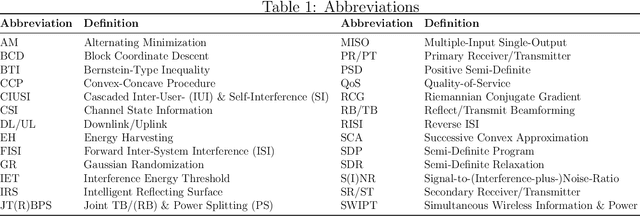


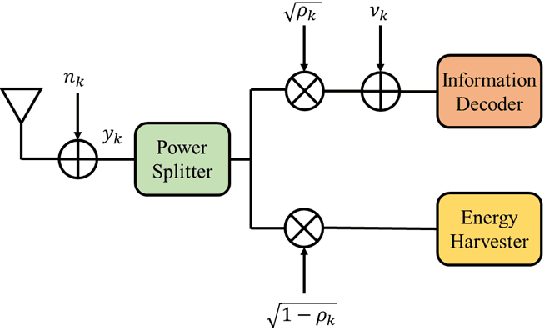
Abstract:This study considers the Joint Transmit/Reflect Beamforming and Power Splitting (JTRBPS) optimization problem in a spectrum underlay setting, such that the transmit sum-energy of the intelligent reflecting surface (IRS)-aided secondary transmitter (ST) is minimized subject to the quality-of-service requirements of the PS-simultaneous wireless information and power transfer (SWIPT) secondary receivers and the interference constraints of the primary receivers (PR). The interference at the PRs caused by the reception of IRS-reflected signals sent by the primary transmitter is taken into account. A coordinated channel state information (CSI) acquisition protocol is proposed. Next, assuming availability at the ST of perfect CSI for all direct and IRS-cascaded transmitter--receiver channels, two penalty-based iterative algorithms are developed: an alternating minimization algorithm that involves semi-definite relaxation in JTBPS design and successive convex approximation in RB optimization, and a block coordinate descent algorithm that employs the Riemannian conjugate gradient algorithm in RB updates. Finally, an outage-constrained robust design under imperfect CSI is devised. Numerical simulations highlight the performance gains of the proposed strategies over benchmarks, corroborate the benefits of using an IRS, and provide valuable insights.
Simultaneous Wireless Information and Power Transfer for Federated Learning
Apr 26, 2021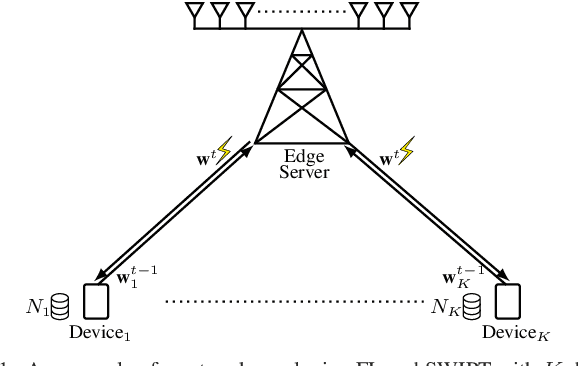
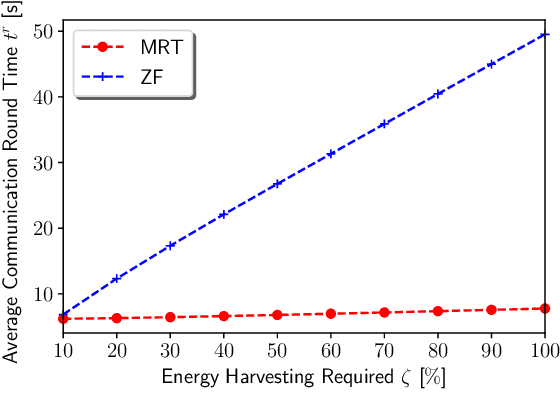
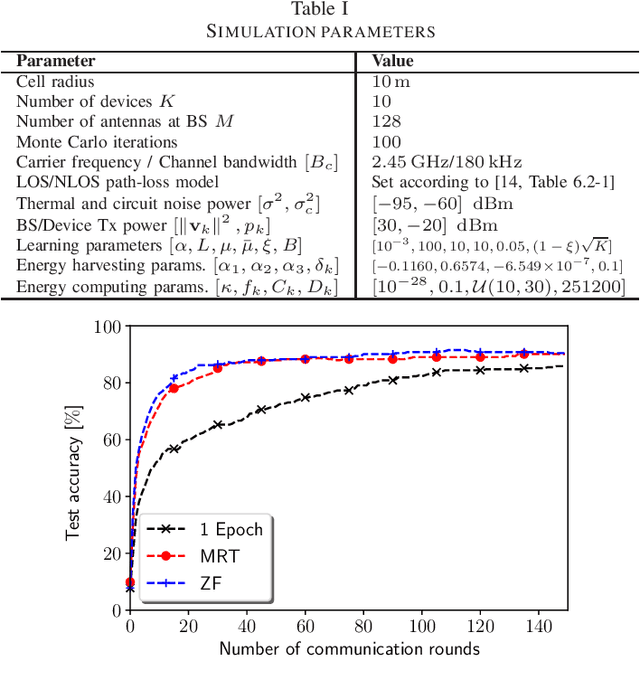
Abstract:In the Internet of Things, learning is one of most prominent tasks. In this paper, we consider an Internet of Things scenario where federated learning is used with simultaneous transmission of model data and wireless power. We investigate the trade-off between the number of communication rounds and communication round time while harvesting energy to compensate the energy expenditure. We formulate and solve an optimization problem by considering the number of local iterations on devices, the time to transmit-receive the model updates, and to harvest sufficient energy. Numerical results indicate that maximum ratio transmission and zero-forcing beamforming for the optimization of the local iterations on devices substantially boost the test accuracy of the learning task. Moreover, maximum ratio transmission instead of zero-forcing provides the best test accuracy and communication round time trade-off for various energy harvesting percentages. Thus, it is possible to learn a model quickly with few communication rounds without depleting the battery.
 Add to Chrome
Add to Chrome Add to Firefox
Add to Firefox Add to Edge
Add to Edge